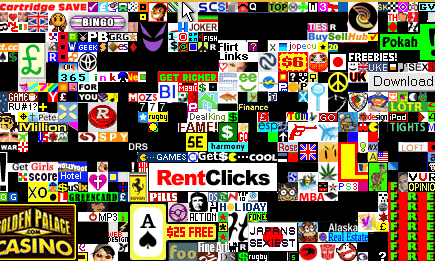The Million Dollar Homepage was a phenomenon in 2005, but almost a decade on, it stands as a monument to the fragility of the internet: over one-fifth of the links on the site are dead.
The site was started by Alex Tew, then a 21-year-old student from Wiltshire. Tew's idea was to try and make $1m by selling 1 million pixels for $1 each. Sold in groups of 100, each pixel could link to another webpage, and so they were used as advertisements by the companies that bought them. As word spread, and more and more users visited the page to see what the fuss was about, the value of an ad there rose, until, 138 days after it launched, the final pixel was sold.
Since the homepage took off, Tew, has moved to San Francisco where he is head of calm.com, which offers online relaxation sessions.
But the internet has changed a lot in nine years, and the homepage is a good illustration of just how true that is. According to David Yanofsky of Quartz, 675 of the 3,066 links go nowhere.
The website "provides an interesting window into the phenomenon of 'link rot,' or hyperlinks that used to work but now point to dead pages," writes Yanofsky. "Our analysis found that 22% of the Million Dollar Homepage’s pixels now fail to load a webpage when clicked."
In fact, the number of pages which have fallen prey to link rot is likely to be far higher. Yanofsky used an automated testing process to find the dead links, marking any page which did not load or took longer than 10 seconds to load as dead.
But manual inspection of the site reveals a huge quantity of links which do load, but to a site very different to the one which it was in 2005. For instance, "homebasedbusinessfreedom.com", "club-millionaire.com" and "petesstore.com" all redirect to domain squatters, companies which buy up dead domains and paste adverts over them. All three sites are marked as "alive" on Yanofsky's chart, suggesting that the actual proportion of URLs which have succumbed to link rot is far higher than 22%.
While few will be shedding tears for the loss of a few vaguely spammy websites, the statistic underscores the difficulty of archiving the internet. Way back in 1998, Tim Berners-Lee, the inventor of the web, wrote an essay titled "Cool URIs don't change" in which he bemoaned the problem. Even earlier, the Internet Archive was created to combat the problem by storing copies of old webpages.

Comments (…)
Sign in or create your Guardian account to join the discussion